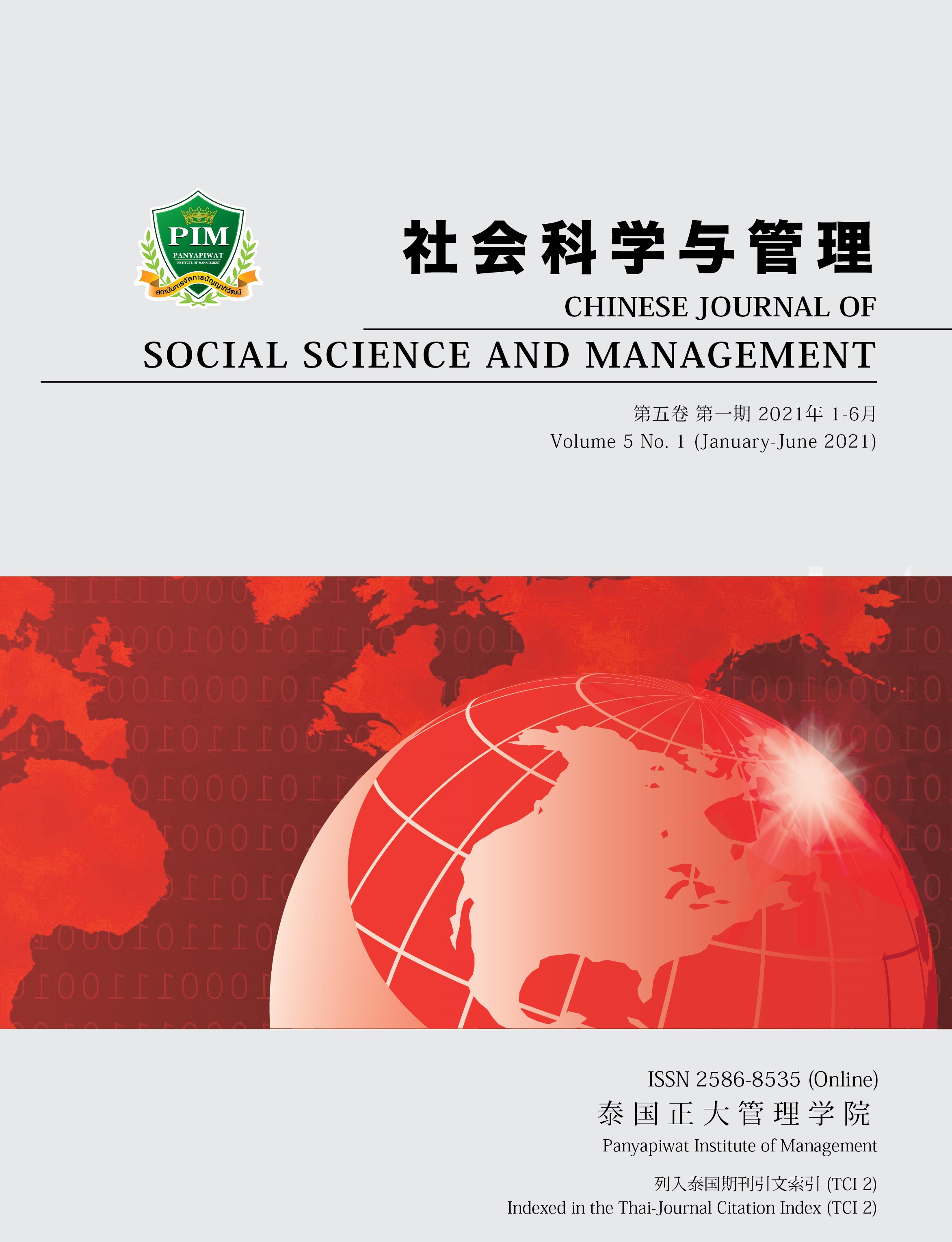A COMPARATIVE STUDY OF COMMONLY USED MODAL PARTICLES IN CHINESE AND THAI LANGUAGE
Main Article Content
Abstract
The modal particle is a major difficulty in second language learning and teaching because of its emptiness in terms of semantics and the complexity of its use in the environment. Both Chinese and Thai languages have a system of modal particles, but these two types are crossed, and the fact that the corresponding rules are not obvious results in great difficulty in the learning and teaching of modal particles. Based on the analysis, it can be seen that there are several corresponding relationships among the modal particles in the Chinese and Thai languages, such as crossed, one-to-zero, and zero-to-one. Comprehending the correspondence between these two languages can greatly reduce the burden of language learning for foreign students, and provide some useful points of reference for international Chinese teaching and research.
Article Details
Chinese Journal of Social Science and Management Editorial Division
The Office of Research and Development, Panyapiwat Institute of Management
85/1 Moo 2, Chaengwattana Rd., Bang Talat, Pakkred, Nonthaburi 11120, Thailand
Tel. 02 855 01048 E-mail: cjssm@pim.ac.th
References
Ding, S. S. (1961). Lectures on Modern Chinese Grammar. Beijing: The Commercial Press. [in Chinese]
Duangpakdee, M. (2017). Similarities and Differences between Chinese and Thai Interrogative Sentences and Strategies for Teaching Chinese Thai Interrogative Sentences. Doctoral Dissertation, Central China Normal University. [in Chinese]
Li, F. (2018). The Distribution Different and Function Consistency of Thai Modal Particle “nâ”. Minority Language, (3), 26-36. [in Chinese]
Liu, M. T. (2014). The Functional Analysis of Chinese Modal “ne” “ma” “ba” “a” and in The Study of Teaching Chinese as a Foreign Language. Master Dissertation, Jilin University. [in Chinese]
Pei, X. R. (2001). A New Compile of Thai Grammar. Beijing: Beijing University Press. [in Chinese]
Somboonlertsiri, K. (2019). Study of Thai Modal Particles. Master Dissertation, Central China Normal University. [in Chinese]
Zhang, S. M. (2010). The Meaning and Function of Chinese Modal Particle “呢” and Thai Modal Particle “หละ”. Lanzhou Academic Journal, (1), 119-121. [in Chinese]
Zhou, Y. M. (2010). Modern Chinese. Beijing: Beijing Normal University Press. [in Chinese]
Zhu, D. X. (1982). Lectures on Grammar. Beijing: The Commercial Press. [in Chinese]


